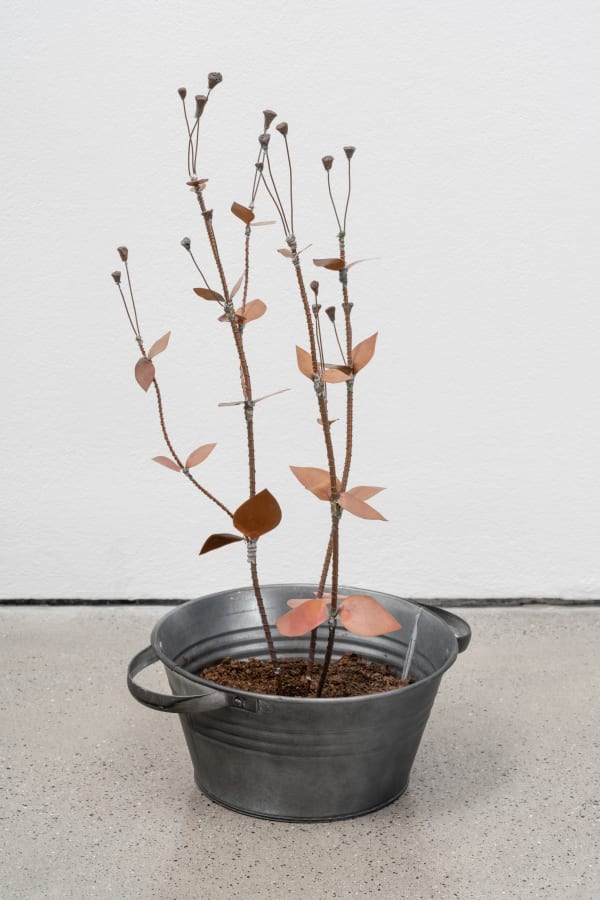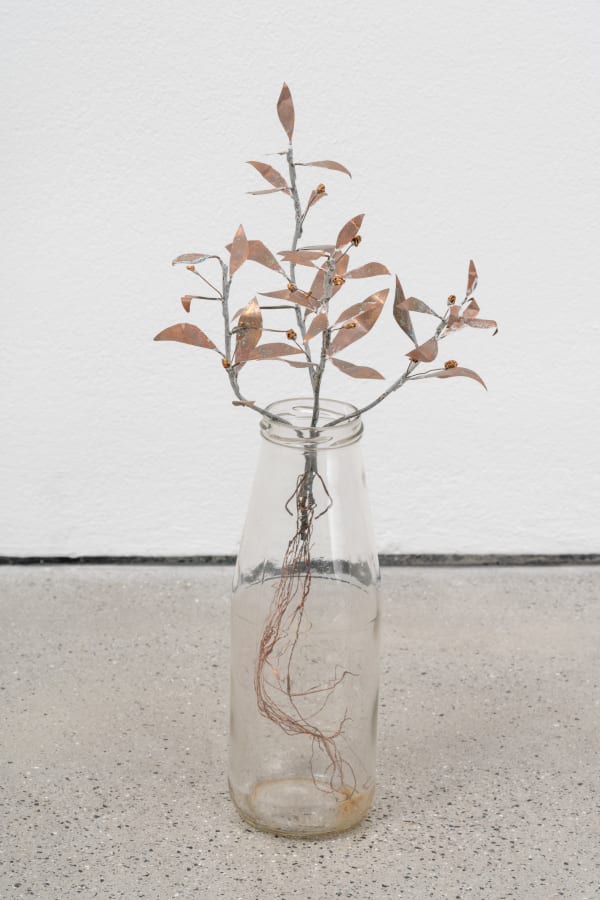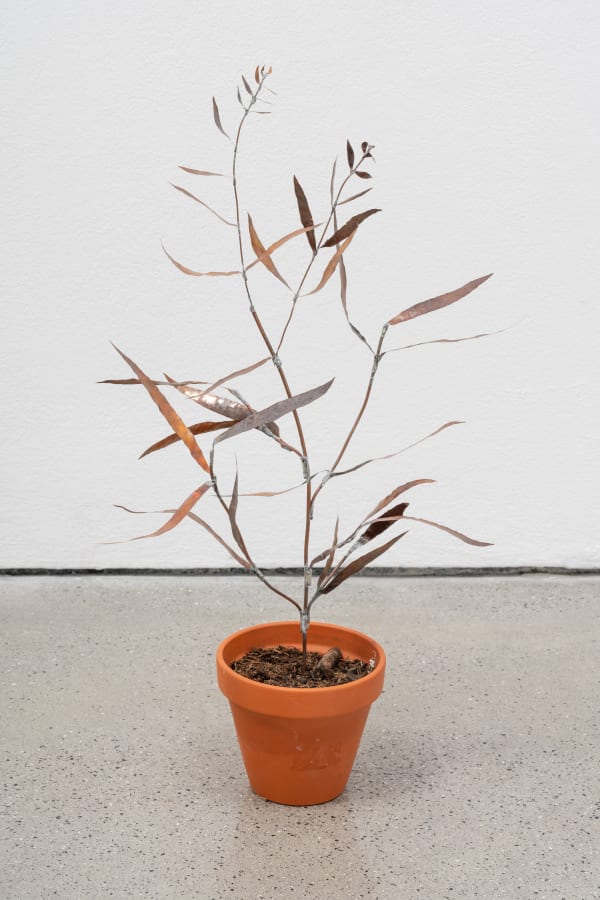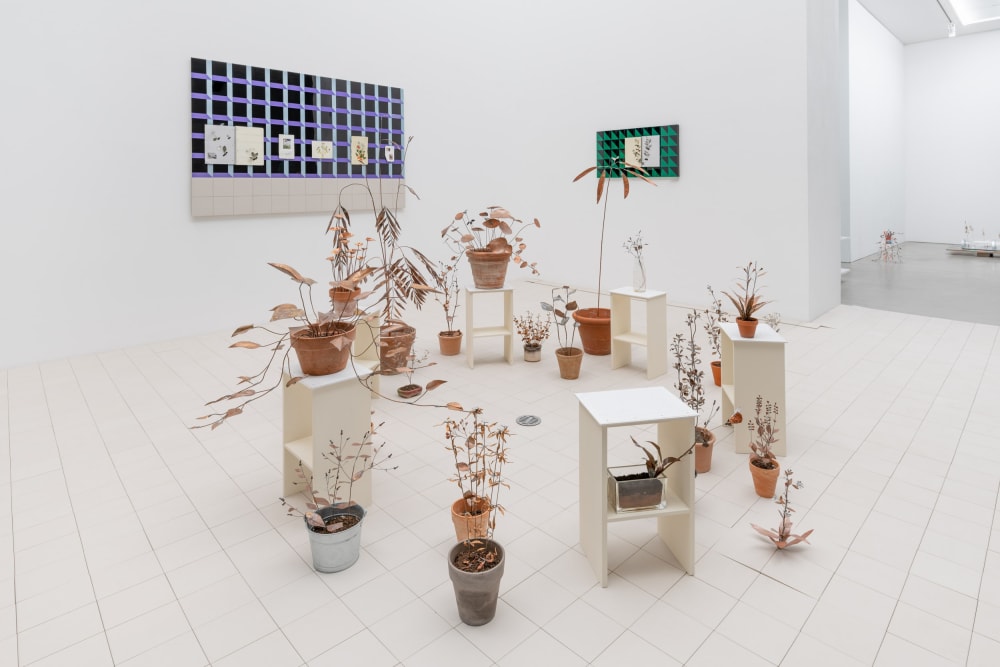NARRATIVAS CIRCULARES: JOSÉ MONTEALEGRE
-
介绍
In Narrativas Circulares, Galerie Thomas Schulte presents an installation of recent works by José Montealegre in the Corner Space and adjacent window front. The artist’s first exhibition with the gallery, Narrativas Circulares features sculptures and new wall works that refer to one another: effectively ending where they began and beginning anew, undergoing transformations along the way. Through varying degrees of manipulation in processes of facsimile and translation, Montealegre’s works resist face-value acceptance and a passive reading. In his worldbuilding, multiple pasts collide, shift, and endure: a blend of reality and fiction that heightens the entanglements at work in transfers of knowledge and the role of interpretation in its retelling.
Narrativas Circulares activates the rounded structure of the gallery’s Corner Space. Entering it, or looking in from the outside, we might initially take the free-standing sculptures for a display of indoor plants set on top of small side tables, and the wall works behind them for abstract geometric paintings—almost a staging of an interior or a slice of a courtyard. The floor of the space is tiled, but doesn’t sit quite right. The off-white tiles lie loosely on the floor, neither fixed nor cut to fit the dimensions of the room. Instead, they teeter and overlap in corners and doorways like scattered papers. The ground shifts under our feet: living, transmuting. The matte ceramic surfaces of the tiles record traces of our steps, becoming an archeological site, of sorts. While the very act of walking on them resembles something like drawing.
Despite being potted in real soil, the plants are made of copper. They share a material connection with the works on the walls, which incorporate cuttings from other copper plants previously produced by the artist, presented here taped to metal notebook pages. The sculptures are based on illustrations from the book Nova Plantarum Animalium et Mineralium Mexicanorum historiae, which was published in the 16th century: a taxonomy of plants in the “New World” for the purpose of relaying them back to Europe. For the book, Spanish naturalist Francisco Hernández de Toledo traveled through central Mexico and compiled more than 3000 specimens, commissioning illustrations from indigenous artists. His descriptions combined comparisons to “Old World” plants in Latin with names and classifications in indigenous languages like Nahuatl.
The artist describes his path through Nova Plantarum as a sort of circular narrative in its own right, with the book’s contents always seeming to refer back to itself —establishing its own frame of reference. The titles of Montealegre’s sculptures even refer to the page numbers where the specific plants are found in the book, rather than to the names of the plants or scientific categories. In his sculptural translations, these pages open up a space, in which the plants are able to take on new life. Rescaled and freed from their two-dimensional frames, their delicate appearance is countered by their material durability – unfolding a book as sculpture.
Here, cut branches and stems from the copper plants also find their way back to the page: casually taped to notebooks and sheets of paper that are absent of text. The plants were picked by Montealegre from the illustrations, and then picked again from his own sculptural translations. The wall works also comprise reflective plexiglass tiled backgrounds in varied patterns of different, alternating colors. The tiling on the floor and in the wall works reflect one another in their repetitive structures, merging in an unfixed spatial orientation. The tiling motifs are sourced from Montealegre’s own photographic archive of tiling patterns from Europe taken to the Americas during the colonial era—where imitations were made using cheaper materials, like ceramic and cement, while inserting their associated power structures as a backdrop in public buildings.
Throughout, classifications of natural and built, original and translation become muddled, revealing the complexity of such relationships. The same extends to personal and historical narratives: here, through a performative enactment of discovering, collecting and displaying something “found”. Like the gesture of plucking petals or leaves that catch your eye and pressing them into a book for safekeeping, inspiration, and preservation. The lined notebook pages and sketch pads invite processes of research and discovery, but also creativity—adding a personal touch and highlighting that these are not neutral acts.
This dialogue carries into the adjacent room with a set of floor- and wall-based works that are materially and conceptually related to those in the Corner Space. Copper stems shoot out from a tiny greenhouse placed on top of a multicolored tile base. While papers and book pages are a particularly prominent thread running through—all fabrications in some way. In this space, too, parts of Montealegre’s previous works and exhibitions have been reused and reoriented: marks, smudges, and shoe prints are still visible on the beige tiles of a wall work. An indication that we really have come full circle. Though, Montealegre tells us, things may not always be what they seem.
Text by Julianne Cordray
-
作品
-
安装图示
-
Inquire about works by José Montealegre

-
视频
-
参展艺术家


















